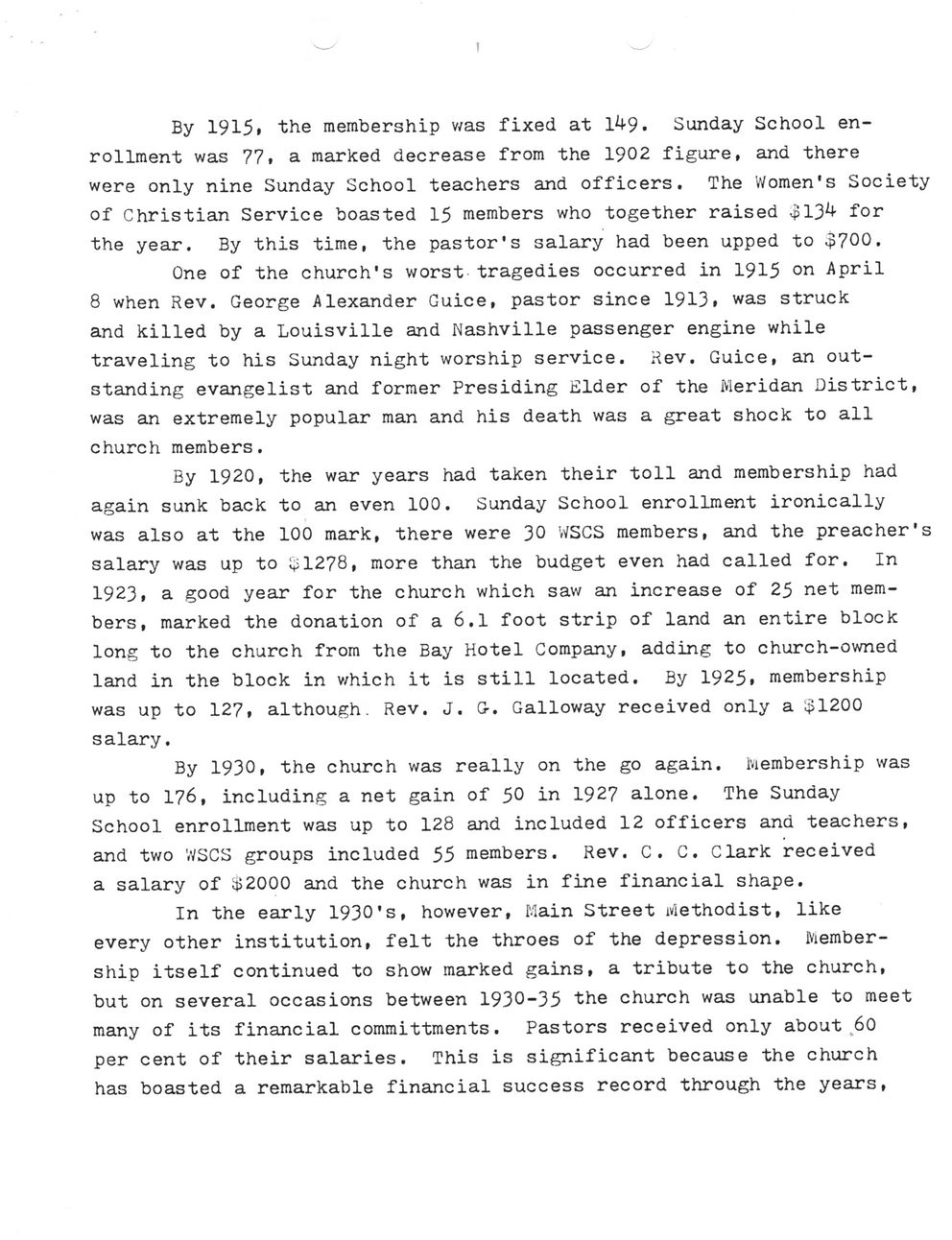This text was obtained via automated optical character recognition.
It has not been edited and may therefore contain several errors.
By 1915* the membership was fixed at 1^9. Sunday School enrollment was 77. a marked decrease from the 1902 figure, and there were only nine Sunday School teachers and officers. The Women's Society of Christian Service boasted 15 members who together raised <£134 for the year. By this time, the pastor's salary had been upped to $700. One of the church's worst tragedies occurred in 1915 °n April 8 when Rev. George Alexander Guice, pastor since 1913* was struck and killed by a Louisville and Nashville passenger engine while traveling to his Sunday night worship service. Rev. Guice, an outstanding evangelist and former Presiding Elder of the Meridan District, was an extremely popular man and his death was a great shock to all church members. By 1920, the war years had taken their toll and membership had again sunk back to an even 100. Sunday School enrollment ironically was also at the 100 mark, there were 30 WSCS members, and the preacher's salary was up to ^1278, more than the budget even had called for. In 1923, a good year for the church which saw an increase of 25 net members, marked the donation of a 6.1 foot strip of land an entire block long to the church from the Bay Hotel Company, adding to church-owned land in the block in v/hich it is still located. By 1925* membership was up to 127* although. Rev. J. G-. Galloway received only a $1200 salary. By 1930, the church was really on the go again. Membership was up to 176, including a net gain of 50 in 1927 alone. The Sunday School enrollment was up to 128 and included 12 officers and teachers, and two WSCS groups included 55 members. Rev. C. C. Clark received a salary of $2000 and the church was in fine financial shape. In the early 1930's, however, Main Street Methodist, like every other institution, felt the throes of the depression. Membership itself continued to show marked gains, a tribute to the church, but on several occasions between 1930-35 the church was unable to meet many of its financial committments. Pastors received only about^60 per cent of their salaries. This is significant because the church has boasted a remarkable financial success record through the years,

Main Street Methodist Church Document (058)